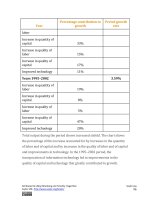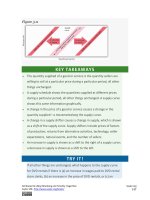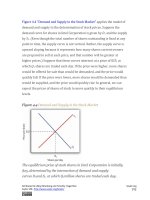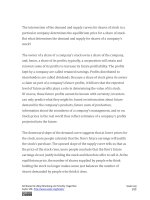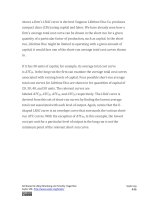Authors libby rittenberg 788
Bạn đang xem bản rút gọn của tài liệu. Xem và tải ngay bản đầy đủ của tài liệu tại đây (415.44 KB, 1 trang )
contributions cover actual amounts receivable from employers and
employees.
To understand the role of government, it will be useful to distinguish four
broad types of government involvement in the economy. First, the
government attempts to respond to market failures to allocate resources
efficiently. In a particular market, efficiency means that the quantity
produced is determined by the intersection of a demand curve that reflects
all the benefits of consuming a particular good or service and a supply
curve that reflects the opportunity costs of producing it. Second,
government agencies act to encourage or discourage the consumption of
certain goods and services. The prohibition of drugs such as heroin and
cocaine is an example of government seeking to discourage consumption
of these drugs. Third, the government redistributes income through
programs such as welfare and Social Security. Fourth, the government can
use its spending and tax policies to influence the level of economic activity
and the price level.
We will examine the first three of these aspects of government
involvement in the economy in this chapter. The fourth, efforts to influence
the level of economic activity and the price level, fall within the province of
macroeconomics.
Responding to Market Failure
In an earlier chapter on markets and efficiency, we learned that a market
maximizes net benefit by achieving a level of output at which marginal
benefit equals marginal cost. That is the efficient solution. In most cases,
we expect that markets will come close to achieving this result—that is the
Attributed to Libby Rittenberg and Timothy Tregarthen
Saylor URL: />
Saylor.org
788
